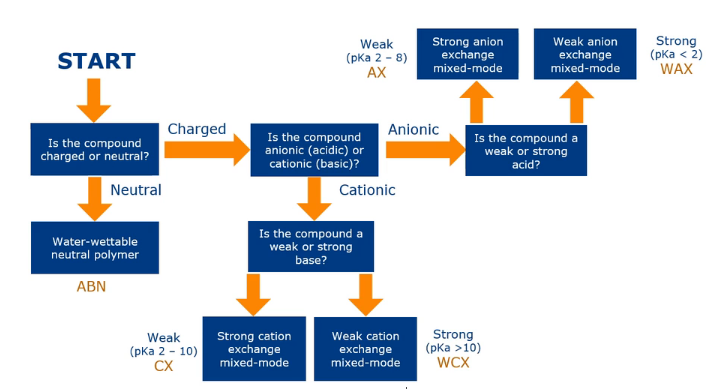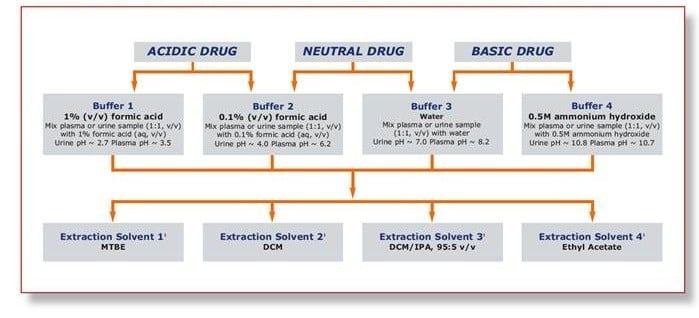Confused about how to choose the right sample preparation technique for your compound? Don't know if Solid Phase Extraction (SPE) or Supported Liquid Extraction (SLE) would be best for your sample preparation? We are here to help you select the most efficient extraction method for your sample, step by step, in the easiest possible way.
Among sample preparation, targeted extraction techniques, such as SLE and SPE, might seem complicated but can be tailored to exploit analyte characteristics, delivering cleaner extracts with high recoveries and high analytical sensitivity.
To give you a rapid overview, we can summarize the selection process of an extraction method in three steps:
- 1. evaluate your compound properties such pKa and logP
- 2. evaluate the ionization state of your compound
- 3. follow the SPE or SLE method selection chart
So, let's start.
First of all, grab a pen and have a look at your sample. Which compound do you want to extract? How well do you know it? It's important to understand your compound's properties to predict how they might behave during the extraction process. In particular, focus on:
- -pKa values
- -logP values
The pKa is the acid dissociation constant and refers to the ionization of the compounds and it's based on the functional groups present on the compound. LogP is the octanol-water partition coefficient and it defines how hydrophobic or hydrophilic a compound is.
Second, follow this simple rule:
- -for SPE, the compound should be fully ionized
- -for SLE, the compound should be fully non-ionized
Finally, follow the SPE selection chart:
Figure 1. Solid Phase Extraction (SPE) method selection chart
or this simple SLE method selection chart:
Figure 2. Supported Liquid Extraction (SLE) method selection chart
What to do with compounds that have multiple pKa? Where do you find pKa and logP values? Do you need to see a couple of real examples? Don't worry! Jillian is here to help you out and explain this and much more in the podcast below.
Do you still have doubts? Don't hesitate to contact us! We are here to help!

 Organic Workflow
Organic Workflow Peptide Workflow
Peptide Workflow Scale-Up Flash Purification
Scale-Up Flash Purification  Sample Preparation
Sample Preparation Biomolecule Purification
Biomolecule Purification Oligo synthesis
Oligo synthesis Scavengers and Reagents
Scavengers and Reagents Service & Support
Service & Support Accessories & Spare parts
Accessories & Spare parts Investors
Investors Reports & News
Reports & News The Share
The Share Corporate Governance
Corporate Governance Calendar
Calendar Sustainability
Sustainability Our Offering
Our Offering Our History
Our History Our Locations
Our Locations Leadership
Leadership